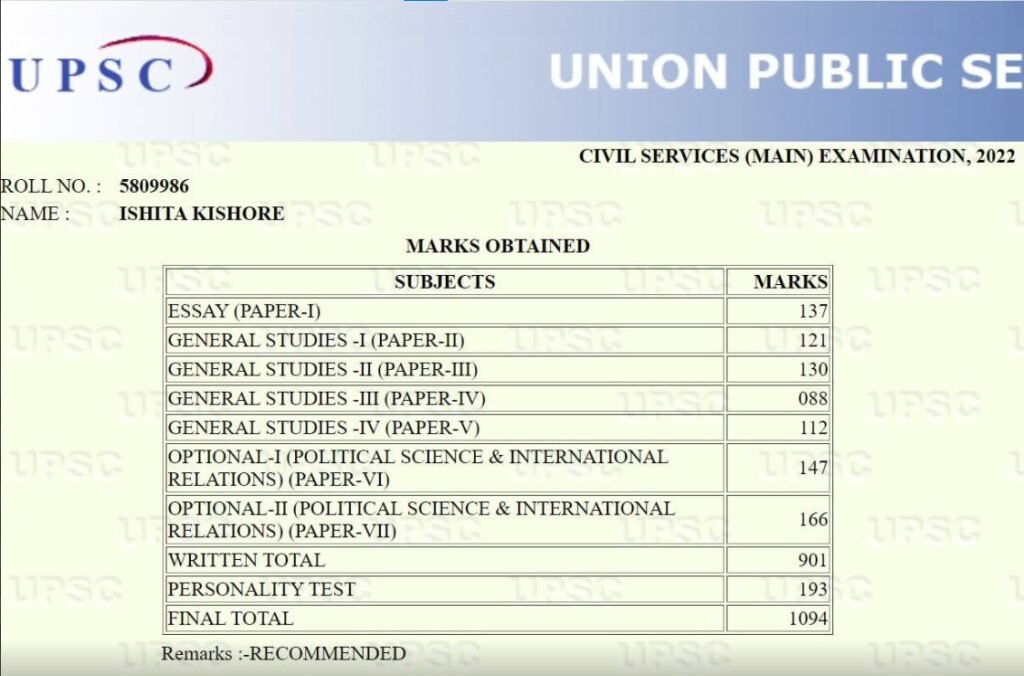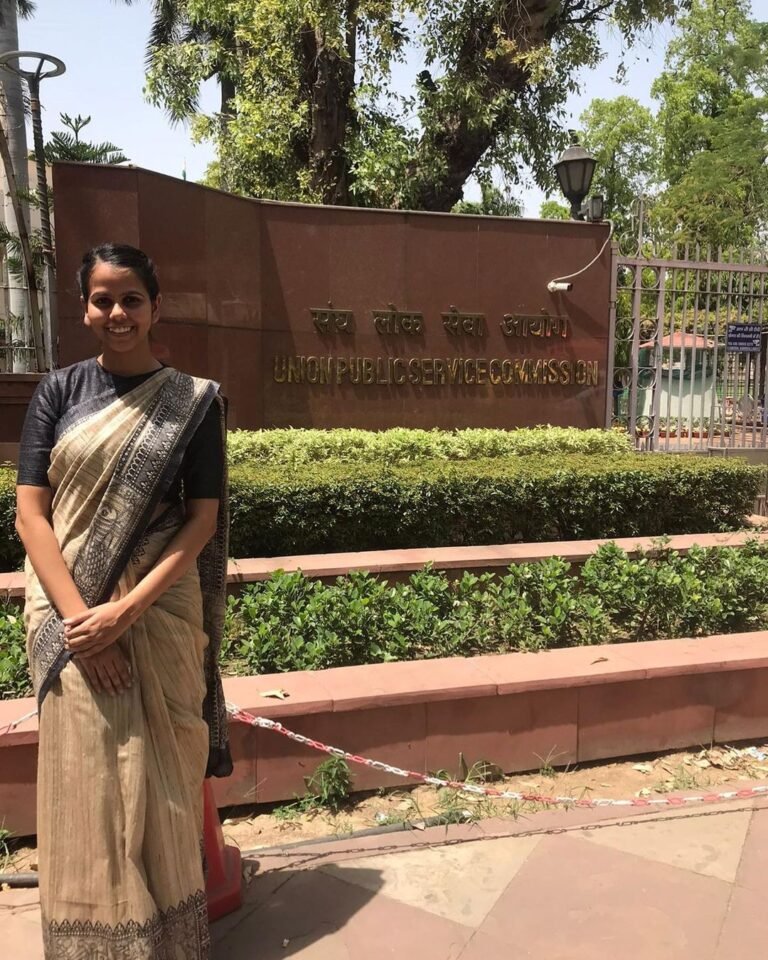Ishita Kishore, the AIR-1 UPSC CSE Topper of 2022, shares her comprehensive strategy for mastering Political Science International Relations (PSIR) preparation:
PSIR
- Resources
Limited my content with the study material in the market. Class notes were sufficient. (The intensity of dictation in class helped me improve my handwriting) Once you’re done with the basics, please try to work on value addition with respect to – introduction – conclusion – examples to substantiate - Current Affairs
This is extremely important for paper 18 and 28 I diligently followed editorials on topics in the syllabus by simply googling the topic and reading top most credible articles Eg – caste, communal, gender issues Eg – India China relations
Please do follow credible websites and balanced authors. I used the following sources (not an exhaustive list)
- ORF
- The diplomat
- MEA
- IDSA
- Carnegie India
- Sansad TV
- Indian express (regular columnists like Harsh V Pant C Rajamohan, Ashok Gulati, Chakshu Roy)
- The hindu (Suhasini Haidar)
In my down time, I tried to productively utilise time and listened to YouTube shorts of S Jaishankar sir and journalist Palki Sharma Upadhyay
- Test series
I joined the crash course. But I didn’t find the crash course tests helpful at all. I have mentioned it to ma’am as well – can be found in the YouTube video. The checking was quite slow and the marks awarded didn’t seem to add any value. The excessive new content could not be internalised in those 3 months so I focussed on my basic notes. Hope there is soon a dedicated PSIR test series that actually benefits those writing Mains. I felt I was on my own with regard to tests, evaluation, answer writing. But I gathered myself in those 3 months. So what was helpful?
- PYQ practice and comparison with peers
- Wrote the same answers as the previous toppers and compared with them (just download their mocks).
- Integration of ideas with multiple revisions Eg: if you can link Mill’s idea of democracy with Gandhi’s interpretation. Golden mean of aristotle with Buddha’s madhyam marg
- Attempting strategy –
I attempted 50 marks at a time starting with the 20+15+15 questions followed by 10 markers in the end. Minimise your loss first : that’s my funda – I naturally chose more questions from Part 8 of the paper because I felt I wrote better on contemporary issues and it also helps in standing out – time management should not be taken casually. It will be the LAST paper after 7 gruelling ones so work on your physical and mental stamina. I could not finish my initial mocks on time, but on final day I managed to complete both papers comfortably. – Precision: I really worked on my articulation to express more with less words. This comes only with practice and keen observation of authors. Try to internalise how to they introduce ideas, elaborate on various points and conclude. - Preparation –
keywords: please identify and memorise these. It makes the paper seem more academic. It also helps you step out of the GS mindset too. – short notes: I summarised the keywords at the end of every topic in my notebook along with Scholars. So just before the exam, that’s all I flipped through to keep these on my fingertips. – Depth of knowledge: try to grasp things deeper. For this you have to spend time with your notes and explore those ideas. Try to connect it with other topics and find real life examples that fit. This will help you internalise it more and memorise it too. – List of books and authors: helps in value addition and display of knowledge.
- I also downloaded ignou notes for Paper 1A and just scrolled through them to grasp the simplicity of language and the method of introducing topics, transitioning across ideas and concluding.

Gist of PSIR Strategy:
- Limited Resources, Maximized Content:
- Class notes proved sufficient for PSIR preparation. Intense dictation in class improved handwriting. Focus on value addition in introductions, conclusions, and examples after mastering basics.
- Current Affairs Mastery:
- Paper 1B and Paper 2 require diligent current affairs knowledge. Followed credible websites and authors, including ORF, The Diplomat, MEA, IDSA, Carnegie India, Sansad TV, Indian Express, and The Hindu. Listened to S Jaishankar and Palki Sharma Upadhyay for productive downtime.
- Test Series Insights:
- Crash course tests were not helpful; suggested the need for a dedicated PSIR test series. Found value in PYQ practice, comparing with peers, and writing answers similar to previous toppers.
- Answer Attempting Strategy:
- Attempted 50 marks at a time, starting with 20+15+15 questions, followed by 10 markers. Focused on Part 8 for better performance on contemporary issues. Emphasized time management and built physical and mental stamina for the last paper.
- Precision and Articulation:
- Worked on articulation to express more with fewer words. Practiced precision in introduction, elaboration, and conclusion by observing expert authors’ styles.
- Preparation Tips:
- Identified and memorized keywords for an academic tone. Maintained short notes with summarized keywords and scholars. Emphasized depth of knowledge, connecting ideas, and real-life examples. Utilized IGNOU notes for Paper 1A for simplicity in language and topic transitions.
This strategy, shared by the AIR-1 UPSC CSE Topper of 2022, encapsulates a focused and nuanced approach to PSIR preparation. Implement these insights to enhance your strategy and boost your UPSC journey.
Also read: Ishita Kishore Strategy Rank-1: UPSC 2022 Topper
You May also check her Telegram Account:

